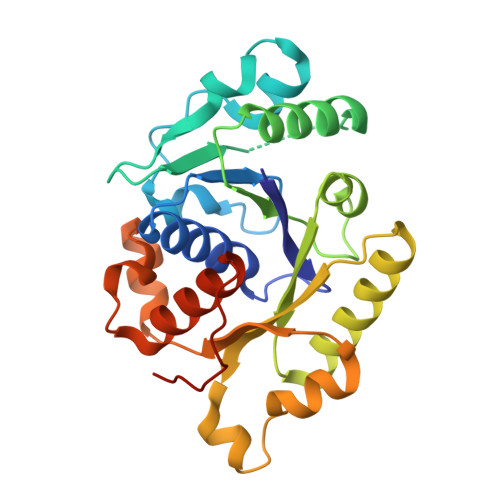Mincd Cell Division Proteins Form Alternating Copolymeric Cytomotive Filaments.
Ghosal, D., Trambaiolo, D., Amos, L.A., Lowe, J.(2014) Nat Commun 5: 5341
- PubMed: 25500731
- DOI: https://doi.org/10.1038/ncomms6341
- Primary Citation of Related Structures:
4V02, 4V03 - PubMed Abstract:
During bacterial cell division, filaments of the tubulin-like protein FtsZ assemble at midcell to form the cytokinetic Z-ring. Its positioning is regulated by the oscillation of MinCDE proteins. MinC is activated by MinD through an unknown mechanism and prevents Z-ring assembly anywhere but midcell. Here, using X-ray crystallography, electron microscopy and in vivo analyses, we show that MinD activates MinC by forming a new class of alternating copolymeric filaments that show similarity to eukaryotic septin filaments. A non-polymerizing mutation in MinD causes aberrant cell division in Escherichia coli. MinCD copolymers bind to membrane, interact with FtsZ and are disassembled by MinE. Imaging a functional msfGFP-MinC fusion protein in MinE-deleted cells reveals filamentous structures. EM imaging of our reconstitution of the MinCD-FtsZ interaction on liposome surfaces reveals a plausible mechanism for regulation of FtsZ ring assembly by MinCD copolymers.
Organizational Affiliation:
Structural Studies, MRC Laboratory of Molecular Biology, Francis Crick Avenue, Cambridge CB2 0QH, UK.

















